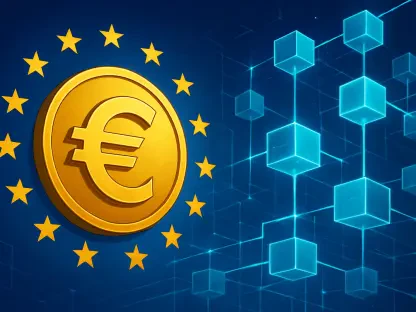Imagine a world where every swipe, tap, or click on a mobile device could potentially expose sensitive financial data to cybercriminals. With mobile transactions becoming a cornerstone of daily life, the stakes for securing these payments have never been higher, and as the market for mobile payment security surges toward a projected value of $9.42 billion by 2031, the urgency to protect digital wallets and contactless payments is sparking intense discussion among industry leaders, tech innovators, and regulatory bodies. This roundup dives into diverse perspectives, tips, and reviews from various sources to uncover what’s driving this growth, the technologies shaping defenses, and the challenges that lie ahead in safeguarding the digital economy.
Exploring the Surge in Mobile Payment Security Needs
The rapid adoption of mobile payments has transformed how consumers and businesses interact, but it has also amplified the risks of data breaches and fraud. Insights gathered from industry reports highlight a shared concern: as mobile wallets and contactless methods become ubiquitous, the need for robust security is non-negotiable. Many experts point to the staggering growth of this sector, projecting an increase from current valuations to $9.42 billion by 2031 at a compound annual growth rate (CAGR) of 6.6%, as a clear indicator of escalating demand.
Different sources emphasize varying catalysts behind this boom. Some focus on the sheer volume of transactions processed via smartphones, while others note the rising consumer expectation for seamless yet safe experiences. A common thread across opinions is that security isn’t just a feature—it’s the foundation of trust in digital payments, pushing companies to prioritize protection over convenience in an increasingly competitive landscape.
This discussion sets the stage for a deeper look into key drivers and innovations. Perspectives vary on whether technology alone can outpace cyber threats or if regulatory frameworks must tighten further. The consensus, however, is clear: understanding the dynamics of this market is critical for stakeholders aiming to navigate its complexities and capitalize on its potential.
Key Drivers Behind the Mobile Payment Security Boom
Rising Demand from Digital Transaction Growth
The explosion of digital transactions has created a pressing need for advanced security measures, a point echoed across multiple industry analyses. As consumers rely more on mobile platforms for everything from grocery shopping to bill payments, the volume of sensitive data at risk grows exponentially. Many industry observers note that this trend drives an urgent call for solutions that can handle high transaction loads without compromising safety.
Some sources highlight user trust as a pivotal factor in sustaining this momentum. If fears of fraud or identity theft persist, adoption rates could stagnate, regardless of the convenience offered by mobile payments. A recurring tip from experts is for providers to balance speed with stringent safeguards, ensuring that users feel confident in every transaction they make.
Contrasting views emerge on the scale of consumer concern versus actual risk. While certain reports suggest that public awareness of vulnerabilities often exceeds real-world threats, others argue that even a single high-profile breach can erode confidence across the board. This tension underscores the need for proactive measures over reactive fixes in maintaining market growth.
Innovations Fueling Stronger Defenses
Technological advancements are at the heart of mobile payment security, with many sources praising innovations like tokenization, end-to-end encryption, and biometric authentication. These tools are frequently cited as game-changers, reducing the risk of data exposure during transactions. For instance, tokenization replaces sensitive information with unique codes, a method lauded for its effectiveness in retail and banking sectors.
Differing opinions exist on the accessibility of these technologies. Some industry voices argue that while cutting-edge solutions offer unparalleled protection, the high cost of implementation can be a barrier for smaller businesses. Tips often include starting with scalable options that can grow with the company, ensuring security isn’t sacrificed due to budget constraints.
A critical perspective shared by several reviews is the ongoing cat-and-mouse game with cybercriminals. As defenses evolve, so do attack methods, prompting a call for continuous innovation. Many agree that staying ahead requires not just adopting current tools but also investing in research for next-generation protections against emerging threats.
Emerging Trends and Regional Differences
Looking at future trends, numerous sources point to artificial intelligence (AI) and blockchain as transformative forces in mobile payment security. AI-driven fraud detection, for example, is often highlighted for its ability to analyze patterns and flag anomalies in real time. Blockchain, meanwhile, is seen as a potential solution for decentralized, tamper-proof transaction records, though opinions differ on its practical rollout.
Regional variations also shape the discourse, with North America often cited for its fintech leadership and Europe for its stringent data protection laws like GDPR. Some analyses suggest that emerging markets hold untapped potential but face hurdles like infrastructure gaps. A frequent recommendation is for global players to tailor solutions to local needs rather than applying uniform strategies.
Disparities in adoption rates spark debate over cultural and regulatory impacts. While some experts believe that stricter laws accelerate security upgrades, others caution that overregulation might stifle innovation. This diversity in viewpoints emphasizes that a nuanced, region-specific approach is essential for widespread effectiveness in this field.
Regulatory Influence and Building Consumer Trust
Regulations such as PCI DSS and GDPR are consistently mentioned as major forces shaping mobile payment security priorities. Many sources agree that compliance not only mitigates legal risks but also serves as a trust signal for users wary of privacy breaches. A common piece of advice for businesses is to view these standards as minimum benchmarks rather than final goals, aiming for transparency beyond what’s required.
Consumer trust emerges as a parallel driver, with varying perspectives on how to achieve it. Some industry insights stress the importance of clear communication about data handling practices, while others advocate for dynamic authentication methods to reassure users. The shared belief is that trust can differentiate providers in a crowded market, turning security into a competitive advantage.
Divergent opinions surface on the future of regulatory landscapes. Certain analyses predict even tighter rules as cyber threats evolve, while others suggest that harmonizing global standards could simplify compliance burdens. Regardless of the path, the consensus leans toward proactive engagement with both laws and user expectations to foster long-term loyalty.
Strategic Advice for Industry Stakeholders
Synthesizing the insights, the trajectory of mobile payment security toward a $9.42 billion valuation by 2031 remains a focal point for businesses. Multiple sources underscore the need to invest in scalable technologies like tokenization, ensuring they can adapt to rising transaction volumes. A recurring tip is to prioritize user-centric features, such as intuitive privacy controls, to stand out in a crowded field.
Different viewpoints on strategy also emerge, particularly around compliance. While some experts urge strict adherence to current regulations as a baseline, others recommend anticipating future shifts to avoid costly overhauls. Practical steps often include partnering with cybersecurity firms to bolster defenses and regularly auditing systems for vulnerabilities.
A balanced perspective shared across reviews is the importance of education—both for internal teams and end users. Training staff on emerging threats and informing customers about safe practices can create a dual layer of protection. This actionable advice aims to equip stakeholders with tools to navigate growth while maintaining robust security postures.
Reflecting on the Mobile Payment Security Landscape
Looking back, the roundup of perspectives on mobile payment security revealed a dynamic interplay of technology, regulation, and consumer behavior that shapes this critical market. Discussions highlighted how innovations like tokenization and AI tackle rising cyber threats, while regional and regulatory differences add layers of complexity to global adoption. The diverse opinions underscored a shared urgency to prioritize trust and protection in every digital transaction.
Moving forward, stakeholders are encouraged to explore hybrid security models that blend current tools with emerging solutions like blockchain. Businesses should also consider forming alliances with regulatory bodies to stay ahead of evolving standards, ensuring compliance becomes a seamless part of operations. For consumers, seeking platforms with transparent data practices can further reinforce safety in mobile payments, paving the way for a more secure digital economy.









